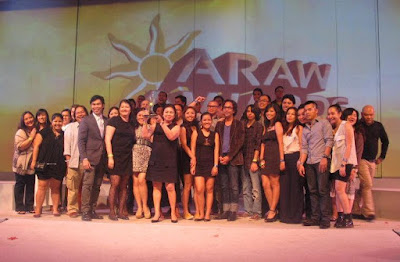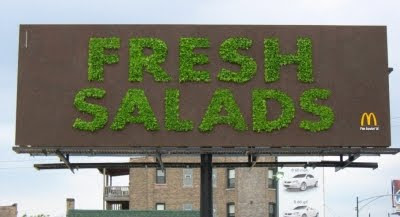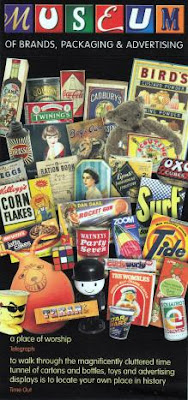
by Roger Pe
Philippine Daily Inquirer
December 30, 2011
Whoever dares give away pillows to sleepy commuters on a stressful, exhausting day?
Who’ll dare dress up bus stops and metro stations to show what a furniture store can do?
This Swedish retailer is a cult word.
Too bad Filipinos have to fly to Hongkong to experience how it is to shop at this “one-stop sanctuary curator of people’s lifestyles,” as one fanatic calls it.
Even Kuala Lumpur has an exclusive wing of a giant mall, all four story modern warehouse, devoted to the entire brand famous all over the world for its chic and contemporary designs.
Tasteful, unconventional advertising, low prices and wacky promotions have earned Ikea more than 50 Cannes Lions.
It was 2010 Advertiser of the Year in the same award show, an honor that has become today as significant as winning the Grand Prix.
Nike, on the other hand, was Advertiser of the Year for the second time last year in the Clio, Cannes fiercest rival.
The AOY award for both competitions is given to a manufacturer, which tallies the most number of points earned from Grand Prix, gold, silver and bronze wins. Each trophy has equivalent points.
You may think that it is just a mathematical tally of awards. No.
Beyond the metal plate, Clio describes it as an honor given to any advertiser, which “achieves creative leadership and consistently demonstrated a commitment to innovation in advertising.”
Cannes calls it a tribute to maverick companies who encourage, nurture and value creativity and inventiveness as the best weapons for selling.
The AOY has become a permanent fixture in Cannes when clients began trickling in to the Mediterranean resort in the mid-90s.
Once an exclusive enclave of creative directors, marketing directors, accounts men, production house directors and just about any person who has a stake in advertising have joined the annual rendezvous.
To lure advertisers and maintain its sparkle as a prestigious global industry award-giving body,
Clio, the Oscars of advertising, also embraced the AOY idea, handing out the award beginning in 2001.
The Philippines’ Ad Congress “Araw” awards couldn’t be left behind and also adopted the same format.
And this year’s winner is, Nestle Philippines.
PHILIPPINES’ ADVERTISER OF THE YEAR
At Ad Congress’ penultimate day, the food and dairy company hauled 5 Gold, 10 Silver and 14 Bronze “Araw” awards to upstage some of the country’s heaviest adspenders.
Earlier this year, Nestle celebrated its 100th anniversary in the country with a tv spot made by Publicis-Manila, its AOR (Agency on Record).
An ambitious project followed suit – a 100-minute anthology of 10 short films, filmed by the best Filipino directors and cameramen who have done Nestle commercials in the past.
Each short film featured a Nestlé brand unobtrusively woven seamlessly into the film without the usual hard sell.
SM Theatres in Manila and in selected urban centers showed the film, which also made a rousing debut in Cannes last June.
Business Friday interviewed Matec Villanueva, Chairman of Publicis Manila and Sandra Puno, Nestle Senior Vice-President and Director of Communications:
BF: Give 5 great reasons why Nestle should be named Advertiser of the Year – not only by Ad Congress standards but also by the marketing industry as a whole.
Matec Villanueva: 1. It dominates almost all the categories it competes in.
2. It serves as the benchmark company for competitors.
3. Although its brands are global, they respect and understand, knowing and accepting that “local” will be the point of difference.
4. They take the word partnership to heart, whether it’s with the consumer or business partners.
5. They are downright decent.
Sandra Puno: 1. For brand ads that aim to inspire
2. Campaigns that celebrate the joy and value of being Pinoy and being part of the Pinoy family
3. Work that showcased the extraordinary creative talent of people in our industry: the producers, the talents, the production crew, the sound and lights engineers, the make-up artist, media practitioners, etc.
4.Kasambuhay Habambuhay films that got so many ad industry people involved, excited and happy
5.Storytelling done the advertising way – brief, concise and straight to the heart.
BF: Why is Nestle such a wholesome name?
SP: Nestlé takes to heart its commitment to put consumers at the heart of what we do. Nestlé lives by its mission to continually help nourish Filipino families in the next 100 years as it has done so the past 100 years.
The wholesome image is likely a result of the positive experience consumers have had with its quality products through the years.
The communication also works at ensuring strict adherence to the company’s core values, its business and communication principles.
BF: What is Nestle’s most challenging but successful encounter this year and how you and your team managed to pull it off?
MV: The centennial project was a killer. When it was crunch time, good relationships in the past served as the strong glue that kept us from breaking apart.
SP: To come up with a Centennial celebration that our consumers and their families would feel very much a part of. It was as simple as listening to our consumers.
The consumers will always be the source of inspiration. With the outstanding creativity of our agency, they were able to translate the consumer sentiment into projects that then inspired so many of us.
BF: The general perception, or reality is, Publicis is very well liked by Nestle. Why do you think so and what is Publicis’ competitive edge?
MV: Perception is reality (laughs heartily).
Harmony in a relationship happens when both parties deliver on the expectations. And we make it a point that we do deliver on what is expected of us and that is communications that help sell the brand and nurture the brand’s health. That is our role in Nestle.
We have 4 advantages: Solid insighting and strategic planning; business-building creatives and passionate servicing. We understand how our clients’ business runs.
BF: Whom do you wish to thank for this great honor?
SP: Our heartfelt thanks to our Filipino families, our true Kasambuhays, our agencies, without whose support we would not be where we are today. I wish you and your family health and happiness as we celebrate our 100th Christmas. Maligayang Pasko at Manigong Bagong Taon sa inyong lahat: John Martin Miller (Chairman & CEO, Nestlé Philippines)
BF: As early as November, global trade magazines were forecasting a not-so-rosy picture for 2012 adspend, what are your thoughts?
MV: There are bases for the forecast.
Europe’s crazy economic twists and turns, the US’s never-ending recession, natural calamities hurting even the first world countries, etc. At the very least, it is going to be like 2011.
BF: Describe the Villanueva-Rivera tandem partnership (Marlon River is President and Executive Creative Director).
MV: It is a rare creative-account tandem because it works and works well. That is because we share the same business and personal values. Our sense of business was molded during our Basic Advertising days.
The best teachers mentored us: Tony Mercado, Minyong Ordonez and Nonoy Gallardo. We constantly learn from each other. “Tanggap namin ang isa’t isa,” and most importantly, we trust each other, unconditionally.
BF: A few pieces of advice for a great, enduring agency-client relationship?
MV: Clients look for a partner who will do communications that will deliver the business. Be that partner. Understanding and embracing the market realities will help develop better communications.
SP: So many people pay lip service to partnership but it is only true partnership that inspires. Inspiration will then spark creativity and creativity in turn will spark inspiration

















